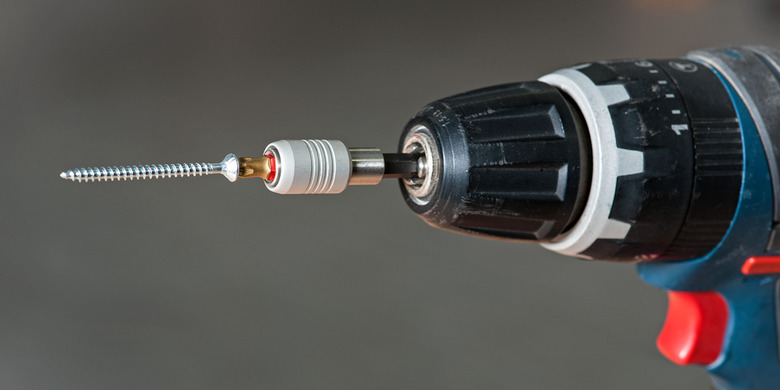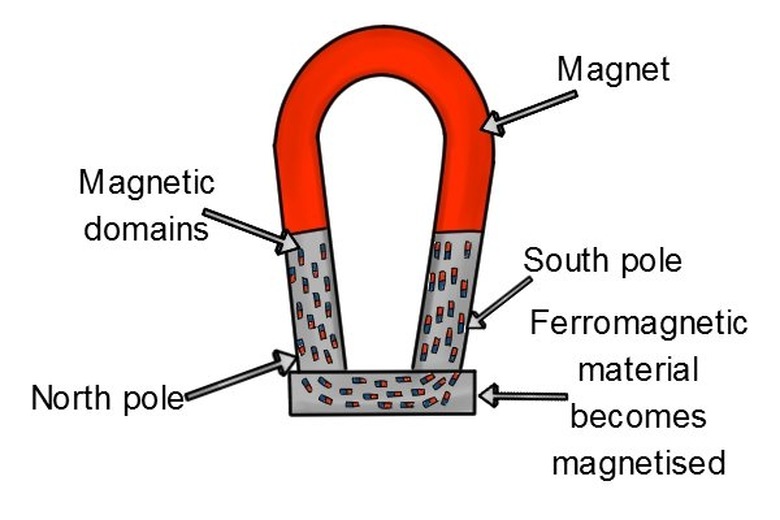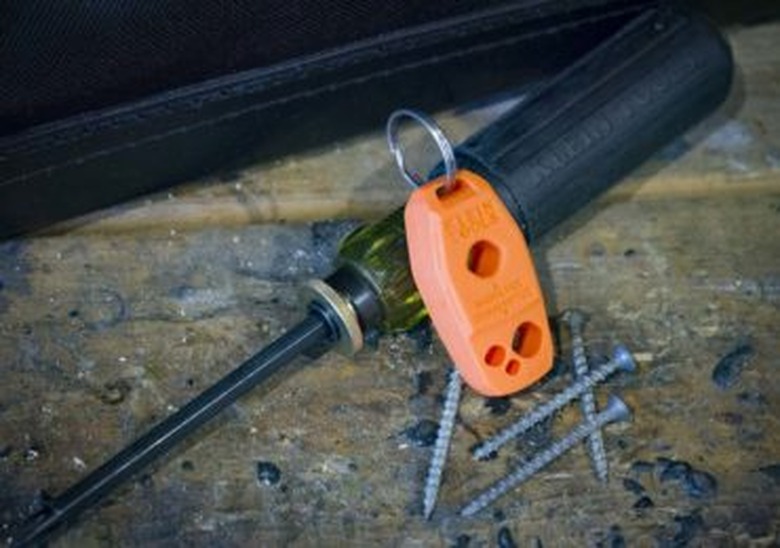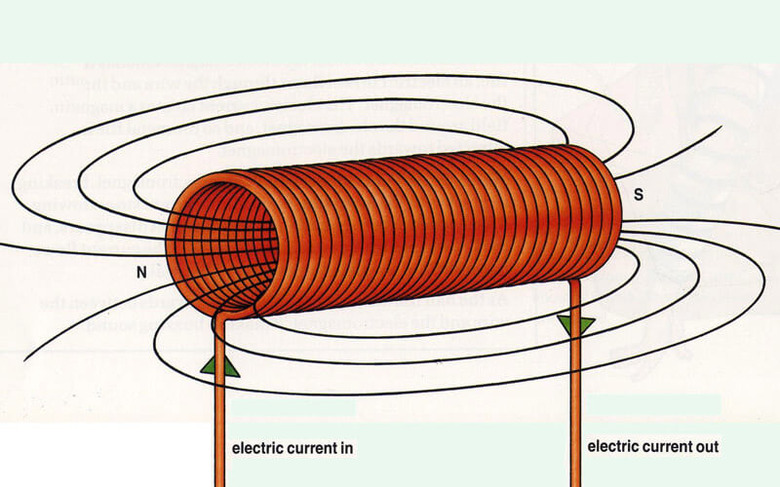How To Magnetize A Screwdriver
Driving screws is a task that sometimes seems to call for a third hand. You need one hand to hold the screw, one to turn the screwdriver or operate the drill, and the third to keep the objects you're fastening aligned. Nobody has three hands, but if your screwdriver could hold the screw, you would easily be able to do most jobs with the two you have. This is one reason why professional tradespeople use magnetized screwdrivers and driver bits.
A magnetized screwdriver serves other purpose,s as well. It eliminates the need to hold the screw when you have to drive it in a place that is too tight for your other hand to fit. It can also hold onto screws that you remove from tight places so they don't fall and get lost. Moreover, if the screw or some other small metal object does happen to fall, you can use the screwdriver to retrieve it.
Only Ferromagnetic Materials Can Be Magnetized
Only Ferromagnetic Materials Can Be Magnetized
You can purchase a screwdriver or screwdriver bits that are magnetized, but there is no reason to spend the money, because it's easy enough to magnetize a screwdriver yourself. There is one condition, however: The shaft of the driver must be made of a ferromagnetic material, which means it must contain iron, nickel, cobalt or a rare earth element, such as gadolinium or ruthenium.
Fortunately, virtually most screwdrivers and screw bits are made of a steel alloy that contains iron, the best-known ferromagnetic material. Specialty screwdrivers made from non-ferromagnetic materials, such as super-hard titanium or titanium alloys, can't be magnetized.
How to Magnetize a Screwdriver or Screwdriver Bit
How to Magnetize a Screwdriver or Screwdriver Bit
Putting the steel shaft of any screwdriver in contact with a permanent magnet will magnetizes the steel for about 3 months. Any magnet will do, but strong ones work better than weak ones. At a minimum, you should use a magnet with a pull force of 1/4 to 1 pound. Neodymium magnets, available at any hardware store, work best. The hardware store likely sells screwdriver magnetizers, too, designed expressly for the purpose.
- Clean the screwdriver or screw bit with a rag to remove rust and dirt. You might want to use paint thinner or a lubricant such as WD-40 if the shaft is particularly oily.
- Hold the screwdriver or screw bit in one hand touch then magnet to the shaft. If it "sticks," the shaft is a ferric material, and you're good to go. If you don't feel any attraction, you won't be able to permanently magnetize the tool.
- Run the magnet along the shaft from the base to the tip. Rotate the shaft 1/4 turn and repeat the motion in the same direction, going from the base to the tip. Continue until you have turned the shaft through a complete rotation.
- Test the magnetic strength by using the screwdriver to pick up a screw. If the attraction isn't strong enough, repeat steps 2 and 3.
- Demagnetize the screwdriver, if necessary, by running the magnet along the shaft in the opposite direction.
Tip
If the magnet doesn't stick to the screwdriver shaft, the shaft is made of a non-ferromagnetic material, such as titanium. Many of these materials are paramagnetic, though, which means they can act as magnets as long as they are in contact with a permanent magnet. If you want to make a titanium screw bit for your drill magnetic, use it in conjunction with a magnetic bit holder.
Alternatives to Neodymium Magnets and Commercial Magnetizers
Alternatives to Neodymium Magnets and Commercial Magnetizers
If you don't want to go to the store to purchase a magnetic screwdriver or screw bit, it isn't likely you want to make a trip to purchase a neodymium magnet or commercial magnetizer, either. No problem. You probably have magnets around the house that will work just as well. Here are some places to look:
- Objects stuck to your refrigerator doors often have magnets strong enough to do the job. The harder it is to pull the object off the refrigerator, the better it will work.
- Audio speakers are constructed with strong permanent magnets. If you can access the back of a speaker, rub the screwdriver shaft along the flat part where the speaker wires are attached. For safety, don't forget to disconnect the wires first.
- Kitchen and bathroom cabinets often have magnetic latches. Rub the screwdriver along one of these magnets to magnetize it.
- Your battery drill may have a magnetic screw holder on the base. This magnet should be strong enough to magnetize your screwdriver or screw bit.
Tip
Using a steel-alloy drill bit in conjunction with a magnetic bit holder magnetizes the bit, and it will remain magnetized even when you use it without the holder. The field wears off after a few months—sooner if you drop the screwdriver or hit it with a hammer. When the screwdriver demagnetizes, use it with the holder or rub it with a magnet to re-energize it.
Other Ways to Magnetize a Screwdriver
Other Ways to Magnetize a Screwdriver
Using electricity: It is possible to magnetize a screwdriver by wrapping the driver shaft with insulated conducting wire and connecting this wire to a power source. This method only works with alternating current, because it's the change in current intensity and direction, known as flux, that creates the magnetic field. If you were to try this method, which isn't recommended, you would need a step-down transformer to convert the voltage from your power outlet to a safe value of a few volts. It is dangerous to put the wires directly into a power outlet. Don't ever do that.
A much safer method is to use a 9V battery, which is a DC power source. Current flows in a single direction from a battery, and its intensity remains constant, so there's no flux to generate a magnetic field. You can, however, construct a charging solenoid by wrapping wire around a short length of 1/2-inch copper water pipe through which the screwdriver shaft can pass freely. Connect the wire to a 9V battery and move the screwdriver back and forth inside the pipe to create flux. Use 16 to 22 AWG insulated wire, and wrap the wire at least 20 times around the pipe for best results.
Using a hammer: If you hit a screwdriver shaft often enough with a hammer, you can jostle the iron atoms in the steel enough to align them in the same direction and produce a magnetic field. This may take time, but it's good to know in case you have an immediate need for a magnetic screwdriver and you have no magnets available. By the same token, once the screwdriver becomes magnetized, hitting it with a hammer can coax the iron atoms out of alignment and cancel the magnetization.




